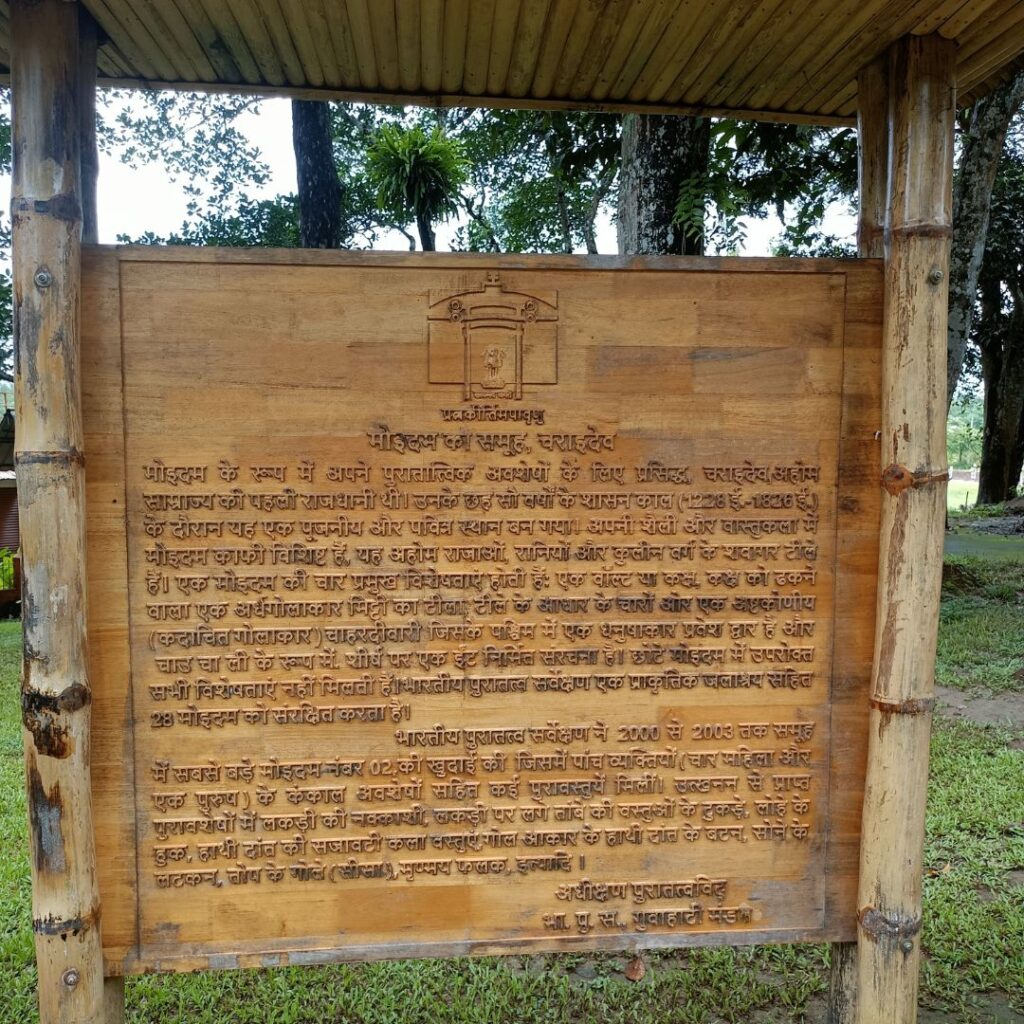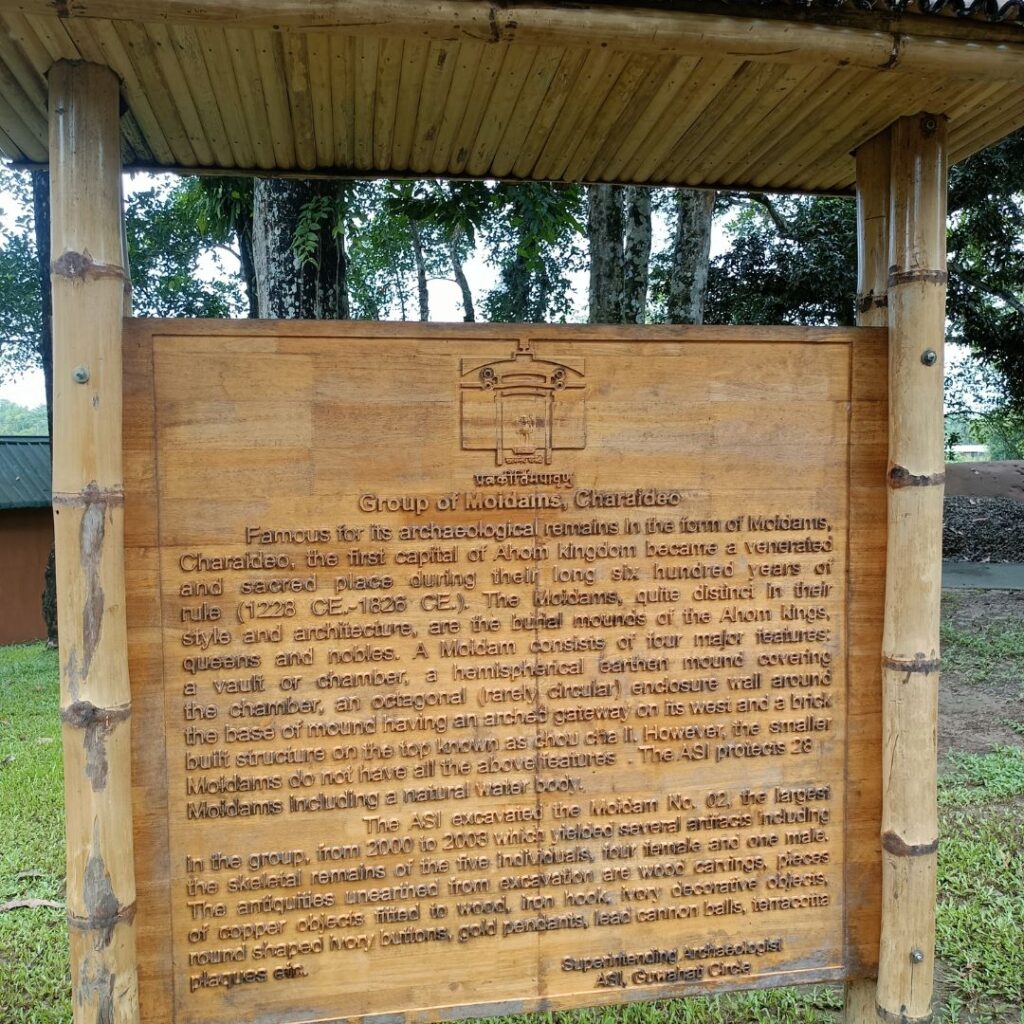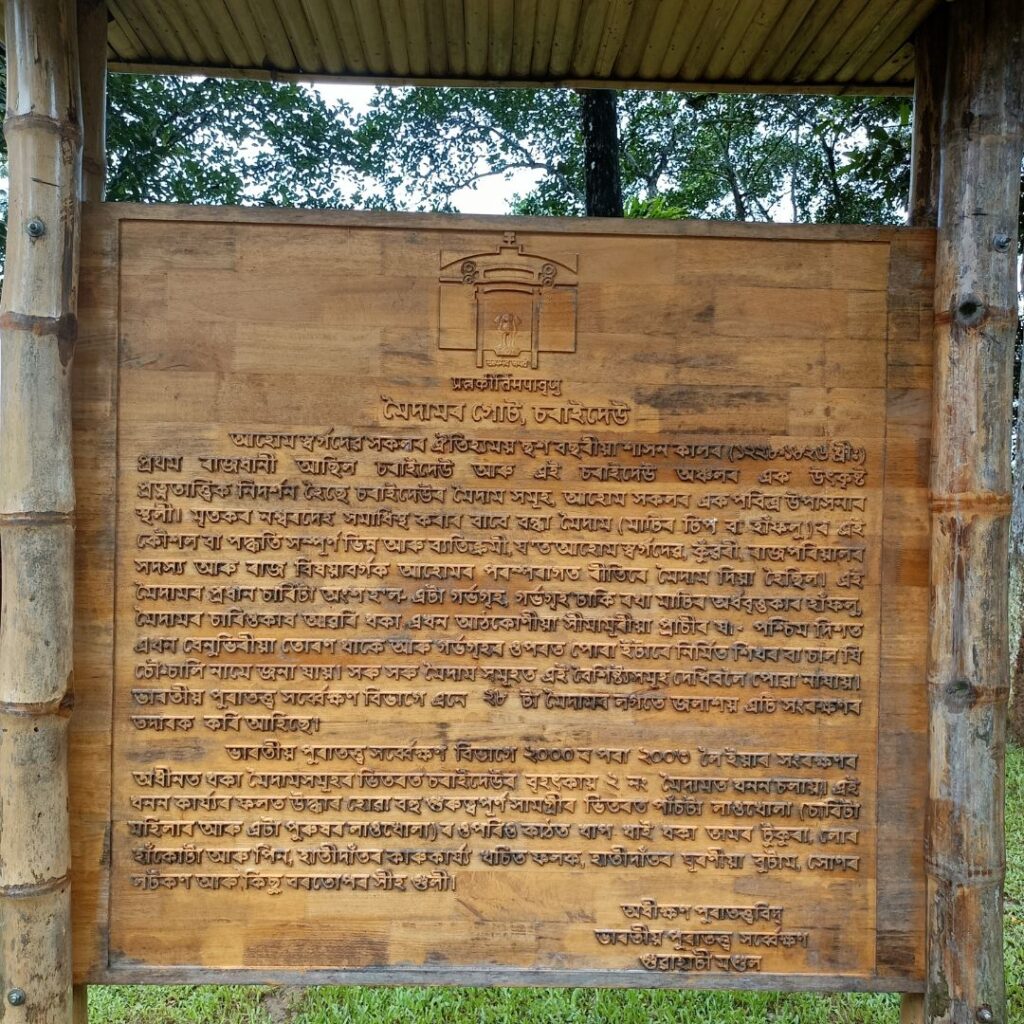Last updated on August 24th, 2024 at 05:49 am
Explore the Moidams, the ancient burial mounds of Ahom kings and queens in Assam. Now recognized as a UNESCO World Heritage Site, these unique monuments offer a fascinating glimpse into the region’s rich history and cultural heritage.
“Some of the links in this post are affiliate links. ‘As an Amazon Associate I earn from qualifying purchase.’ This means if you click on the link and purchased the item. I will receive an affiliate commission at no extra cost to you. All opinions remain my own.”
The Moidams, often referred to as the “Pyramids of Assam,” are the ancient burial mounds of the Ahom kings, queens, and nobles. These remarkable structures have recently garnered global attention, as they were declared India’s 43rd World Heritage Site during UNESCO’s 46th World Heritage Committee session in New Delhi. This prestigious recognition highlights the Moidams as the first cultural property from Northeast India to be included in UNESCO’s World Heritage List, marking a significant achievement for the region and the country.
What are Moidams of the Ahom Dynasty?
The Moidams, also known as Maidams, are burial mounds constructed by the Ahom Dynasty in Assam, a northeastern state of India. The term “Moidam” is derived from the Tai words “Phrang-Mai-Dam” or “Mai-Tam,” which translate to “bury” and “the spirit of the dead,” respectively. These mounds serve as the final resting places for the Ahom kings, queens, and nobles, and are a testament to the rich cultural and historical heritage of the Ahom Dynasty that ruled Assam from the 13th to the early 19th century.
Importance of Moidams
- Unique Architectural Style: The Moidams are distinguished by their unique architectural style, which reflects the foreign influences on the Ahom Dynasty. These structures are not merely burial sites but are monumental in their construction and design.
- Cultural Significance: The Moidams primarily serve as the burial sites for the Ahom royalty. Each mound tells the story of the individual buried within, showcasing the cultural practices and traditions of the Ahom people.
- Geographical Spread: These burial mounds are scattered across upper Assam, with Charaideo, the first capital of the Ahom Dynasty, serving as the main necropolis. Charaideo holds special significance as it became a sacred site where the Ahom royalty were buried according to traditional Tai-Ahom rites.
- Historical Value: The Moidams encapsulate the history of the Ahom Dynasty, providing insights into their way of life, beliefs, and practices. They are an invaluable resource for historians and archaeologists studying the region’s past.
- Recognition and Preservation: The inclusion of the Moidams in the UNESCO World Heritage List not only recognizes their cultural and historical importance but also ensures their preservation for future generations.



Structure of a Moidam
Each Moidam consists of three main components:
- The Vault or Chamber: This is the central part of the Moidam where the body of the deceased is placed. Initially, these vaults were constructed using wooden poles and beams. However, during the reign of King Rudra Singha (1696-1714 CE), stone and brick replaced wood as the primary building materials.
- The Earthen Mound: Covering the vault is a hemispherical earthen mound. The size of the mound varies, ranging from small mounds to large hillocks, depending on the status and resources of the deceased.
- The Brick Structure (Chaw-chali): On top of the earthen mound, a brick structure is built for annual offerings. Surrounding this structure is an octagonal boundary wall with an arched gateway, adding to the grandeur of the Moidam.
Inside the vault, the deceased were buried along with their belongings, such as clothes, ornaments, and weapons. Sometimes, the burial also included valuable items and attendants, although the practice of burying people alive was abolished by King Rudra Singha.
Origin and Evolution of the Moidam Tradition
The Moidam burial tradition began with the first Ahom king, Chau-lung Siu-ka-pha, who established the Ahom Dynasty in Assam. Upon his death, he was buried at Charaideo according to Tai-Ahom rites. This practice of burial continued for the Ahom royalty, making Charaideo a revered and sacred site. For over 600 years, the Moidams served as the final resting places for the Ahom kings, queens, and nobles, each Moidam symbolizing the dynasty’s rich history and cultural heritage.
The Moidams of the Ahom Dynasty stand as a testament to the rich cultural and historical legacy of Assam. Their recent recognition as a UNESCO World Heritage Site underscores their global significance and ensures their preservation for future generations. These ancient burial mounds, with their unique architectural style and cultural importance, continue to fascinate historians, archaeologists, and visitors alike, offering a glimpse into the glorious past of the Ahom Dynasty. As the “Pyramids of Assam,” the Moidams not only honor the memory of the Ahom royalty but also celebrate the enduring heritage of Northeast India.

